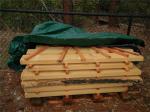The safety of gas cooking has long been investigated by the research community. Gas burners can produce nitrous oxide, carbon monoxide, sulphur dioxide and other pollutants. Here are highlights from two recent specific studies.
- A project by the Lawerence Berkeley Laboratory (paper submitted to the Environmental Health Perspectives earlier this year) found that these pollutants can exceed the Environmental Protection Agency safety levels set for outdoor environment. Poor air quality is known to cause health hazards, including possibly asthma and even autism. Imagine having to breathe the air all the time while indoors.
- A paper published in 2012 in the Environmental Health News by a team of doctors found that pregnant mothers exposed to excessive gas cooking emission may stifle the mental development of their infants. The doctors studied over 2000 pregnant mothers between 2004 and 2008 and tracked the mental developmental indices (MDI) of the infants. Infants in gas cooking households generally exhibit lower MDIs.
These pollutants must be dealt with properly as we improve the energy efficiency of our homes which should be more air tight. The best solution is to avoid using gas cooking and other gas burning appliances inside the house.
If you must use a gas burner, install a properly sized kitchen exhaust fan and place it near the stove to remove as much pollutants and as soon as possible. Make sure that the exhaust is vented outside of the house and not into the garage, attic, or crawl space. Use the exhaust fan whenever you are cooking. Also make sure that there is a good source of fresh air from outside to replenish the exhaust. Whether you use a gas burner or not, using an exhaust fan is also good for removing moisture, odor and other pollutants from cooking the food.
Gas cooking is popular for a few reasons: ease of heat intensity control, lower cost of gas compared with electricity, and perceived faster cooking from higher heat. In fact, the last point is somewhat of a fallacy. Because of the open flame and space under around the burner, gas burners deliver only about 30% to 40% of the energy to the cooking utensil. An electric radiant burner can deliver 70% to 75% of the energy as a result of close contact between the heating element and the utensil.
The bottom line: take all safety precautions.







